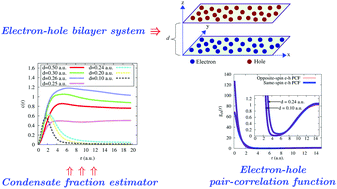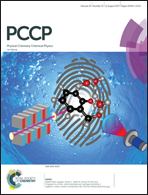Diffusion Monte Carlo study of excitons and biexcitons in a mass-asymmetric electron–hole bilayer
Abstract
We employed the diffusion Monte Carlo method, under fixed node approximation, to investigate the various ground state properties of a mass-asymmetric electron–hole bilayer system. Particularly, we calculated the ground state energy, the condensation fraction c, and the pair correlation function g(r) at density rs = 5 a.u. for the inter-planer distance d ≤ 0.5 a.u. Based on the characteristics of condensate faction and pair correlation functions, we found the phase transition from the excitonic fluid phase to the biexcitonic fluid phase at d = 0.24 a.u. We also analytically calculated the critical layer separation dcrit for biexciton stability, the value for which was almost double the d = 0.24 a.u.



 Please wait while we load your content...
Please wait while we load your content...